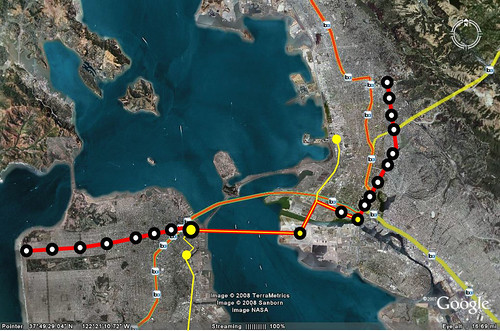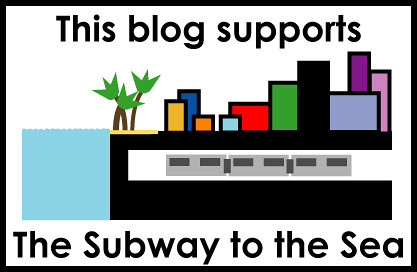So you all know ahead of time, we're going to have an election night liveblog here at The Overhead Wire. The reason? No it's not to talk about the presidential race, but rather the Transit Space Race elections going on all over the country. Here's a preview of what we'll cover:
St. Louis - An election is being held to give Metro a half cent more in order to keep up with operating expenses and expand Metrolink, the region's light rail system. It's called Proposition M.
Santa Fe - A
Sales Tax to extend Rail Runner into the city from Albuquerque.
Oakland/Berkeley - AC Transit is looking to raise the parcel tax $48 annually to pay for operations. This measure is called VV. KK is also on the ballot and would allow AC Transit to build BRT on Berkeley streets.
Los Angeles - This would be a half cent sales tax for capital expansion. It's called Measure R.
Sonoma Marin - SMART will go back to the polls to ask for an 1/4th cent sales tax to build a commuter rail line. It is called Measure Q.
Honolulu - Island residents are being asked whether they approve of a steel on steel transit system. (Crazy huh?)
Kansas City - A half cent sales tax is on the ballot to build a starter light rail line.
Seattle - Prop 1. I'm not going to be covering this as much except for some crucial updates. I'm sure the boys at
STB got it covered.
High Speed Rail - $9.9 billion dollar bond for a statewide high speed rail line. This one is Prop 1a.
If I am missing something let me know. I'll be live blogging into the night until we get the Hawaii results. It's still a bit of time away. But I'll be reminding everyone every once in a while to keep your minds off the presidential election.











